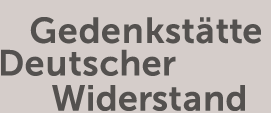German Resistance Memorial Center 4 Resistance from the Workers’ Movement
4 Resistance from the Workers’ Movement
Even before 1933, Communists, socialists, Social Democrats, and labor union members defended themselves against National Socialism. However, there was no defense front across the whole of the workers’ movement because the differences between Communists and Social Democrats remained impossible to bridge. The labor union leadership even sought a compromise with the Hitler government at a late point. Many Communists, Social Democrats, and labor unionists were persecuted and arrested after the National Socialists took power. Thousands managed to escape abroad, where they continued their fight against National Socialism.
There were diverse forms of resistance from the workers’ movement: criticism of National Socialist rule in the workplace or neighborhood, gatherings, courier services, the passing on of information, distribution of leaflets and illegal material, and aid to relatives of imprisoned fellow party members. After 1939, the focus was on setting up resistance groups in the workplace, spreading news about the real course of the war, attempting to sabotage the armaments industry, and supporting persecuted people.
Regime opponents also tried to overcome the split in the workers’ movement within the resistance. Socialists and proponents of unity came together mainly in groups such as New Beginning, the Red Shock Troop, and the Red Fighters, but also in the Socialist Workers’ Party (SAP) and the FAUD (anarcho-syndicalists). They exchanged information and discussed plans for the time to follow National Socialist rule. Groups like the European Union and the Anti-Nazi German People’s Front concentrated on contacts with forced laborers and prisoners of war. Their goal, aside from immediate help for those in danger, was fighting National Socialism together.
Biographies
Documents
 Reichstag speech by the Social Democratic Party chairman Otto Wels against the Enabling Act, March 23, 1933.The speech was distributed in this form in a printed leaflet in 1933.
Reichstag speech by the Social Democratic Party chairman Otto Wels against the Enabling Act, March 23, 1933.The speech was distributed in this form in a printed leaflet in 1933.
Source: AdSD / Friedrich-Ebert-Stiftung
English translation: Katy Derbyshire; English editing: Ginger A. Diekmann;
Editing: Ute Stiepani
1st edition 2016
 First exile program (Prague Manifesto) of the Social Democratic Party of Germany (SOPADE), January 1934.More than 10,000 copies of this edition were smuggled into Germany.
First exile program (Prague Manifesto) of the Social Democratic Party of Germany (SOPADE), January 1934.More than 10,000 copies of this edition were smuggled into Germany.
Source: Gedenkstätte Deutscher Widerstand
English translation: Katy Derbyshire; English editing: Ginger A. Diekmann;
Editing: Ute Stiepani
1st edition 2016
 Last legal edition of the Communist central newspaper Rote Fahne, Berlin, February 26/27, 1933.Source: Gedenkstätte Deutscher Widerstand
Last legal edition of the Communist central newspaper Rote Fahne, Berlin, February 26/27, 1933.Source: Gedenkstätte Deutscher Widerstand
English translation: Katy Derbyshire; English editing: Ginger A. Diekmann;
Editing: Ute Stiepani
1st edition 2016
 Illegal edition of the Rote Fahne containing the call of February 2, 1936,to form a popular front of Communists, Social Democrats, socialists, and independents.
Illegal edition of the Rote Fahne containing the call of February 2, 1936,to form a popular front of Communists, Social Democrats, socialists, and independents.
Source: AdSD / Friedrich-Ebert-Stiftung
English translation: Katy Derbyshire; English editing: Ginger A. Diekmann;
Editing: Ute Stiepani
1st edition 2016
 Special edition of the illegal leaflet “The Peace Fighter” from June 1942, written by the resistance group formed around Wilhelm Knöchel and distributed in the Ruhr region.
Special edition of the illegal leaflet “The Peace Fighter” from June 1942, written by the resistance group formed around Wilhelm Knöchel and distributed in the Ruhr region.
Source: LAV NRW R, RW 0058 Nr. 12111, fol. 261 ff.
English translation: Katy Derbyshire; English editing: Ginger A. Diekmann;
Editing: Ute Stiepani
1st edition 2016



















